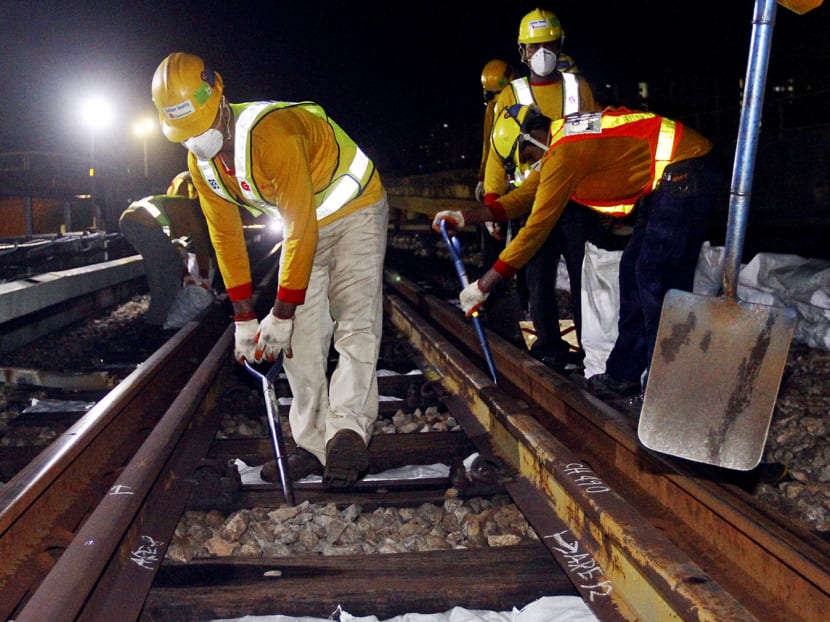Number of rail workers needed to rise 50% by 2030
SINGAPORE — By 2030, the number of workers in the rail industry needed here is expected to increase by more than 50 per cent to 15,000, said Transport Minister Khaw Boon Wan yesterday, noting that the jobs will evolve in the next decade, with the shift towards predictive maintenance as well as the launch of high-speed rail services here.
SINGAPORE — By 2030, the number of workers in the rail industry needed here is expected to increase by more than 50 per cent to 15,000, said Transport Minister Khaw Boon Wan yesterday, noting that the jobs will evolve in the next decade, with the shift towards predictive maintenance as well as the launch of high-speed rail services here.
Over the past five years, he noted, the Land Transport Authority (LTA) and the two rail operators, SMRT and SBS Transit, have increased their hiring for engineering, operations and maintenance, bringing the total industry headcount to about 9,300.
“By 2030, we expect this number to further increase to 15,000. This makes the rail industry a growth industry, whose employment prospects are almost guaranteed in the next decade,” said Mr Khaw, who is also the Coordinating Minister for Infrastructure.
“Salaries are also attractive. While the median pay for fresh graduates in 2015 was about S$3,300, engineers joining the public service for instance, can expect about S$3,800 a month,” said Mr Khaw, who was speaking at the launch of the Singapore Rail Academy.
He noted that a rail engineer’s or technician’s job today is very different from that in the 1980s and it will evolve even further in the next decade.
“For example, we are moving from preventive to predictive maintenance. This is because the technology to monitor the condition of our train systems on a real-time basis has become more prevalent and affordable. There will also be opportunities for our rail engineers to be involved in complex, cutting-edge projects, such as the Singapore-Kuala Lumpur High-Speed Rail,” he said.
Hence, the new rail academy will be instrumental in helping Singapore develop a new generation of rail engineers.
It will be a centre for “skilling, up-skilling and re-skilling”, and a centre for accreditation and certification of proficiencies, said Mr Khaw.
The academy, a set-up within the LTA and located at its Bedok campus, will also serve as a research and development centre for rail engineering.
It will conduct applied research with research institutes and institutes of higher learning.
“We already have a head start. Today, we are one of the leaders in driverless trains. The Downtown Line, when complete, will be the world’s longest underground driverless system. In fact, after the North-East Line began driverless operations in 2003, other cities approached us to help them develop similar systems.
“We should build on this foundation, and become leaders not only in driverless train operations, but also in predictive rail maintenance,” said Mr Khaw.







